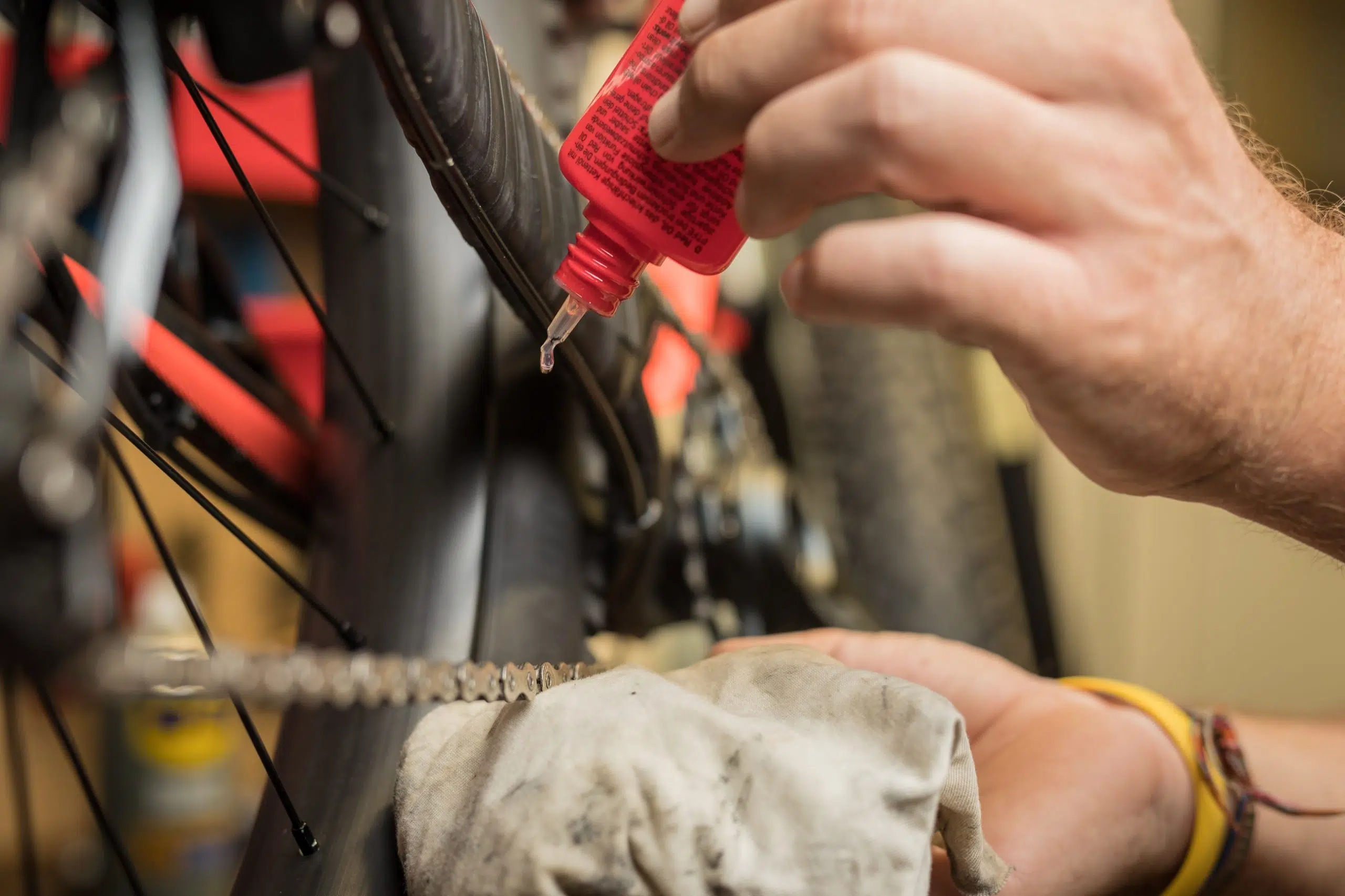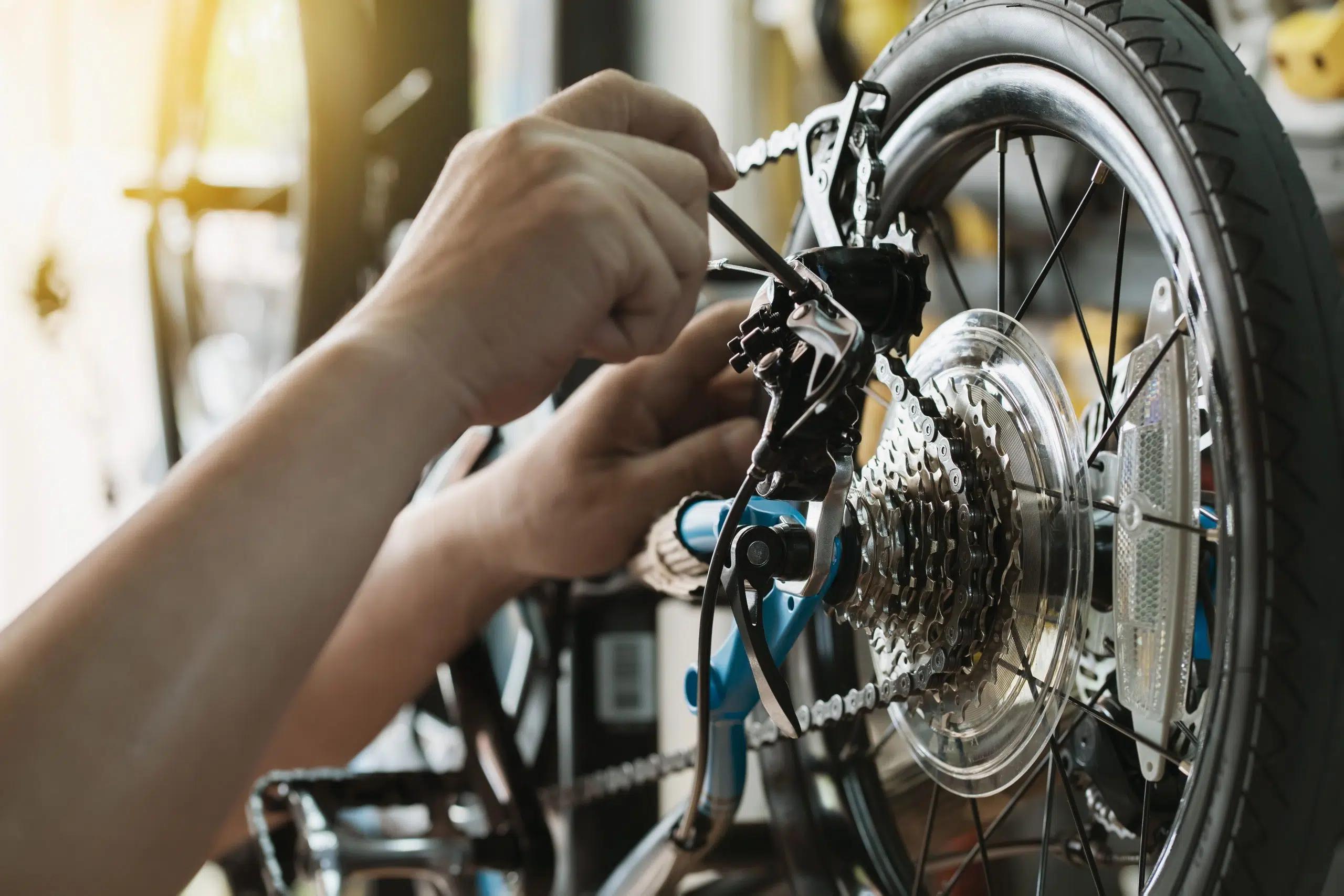Regular bike repair is crucial for keeping your bike in top condition. It not only ensures a smooth and safe ride but also extends the lifespan of your bike. But how to tune up a bike? Key maintenance tasks include cleaning, lubricating, and inspecting various components for wear and damage. Cleaning your bike regularly helps remove dirt, grime, and debris that can build up and cause components to wear out faster. It also allows you to inspect your bike more closely and identify any issues that may need attention.
Regular bicycle tune ups allow you to catch any problems early before they become more serious and costly to fix. This includes checking for loose bolts or screws, worn brake pads, and damaged cables. By staying on top of these tasks and performing regular maintenance, you can avoid costly repairs and enjoy a more enjoyable riding experience. Your bike will perform better, last longer, and provide you with many more miles of fun and adventure.
How to Tell If Your Bike Needs a Tune Up?
There are several signs that indicate your bike may need a tune up. If you notice any of the following issues, it’s a good idea to inspect your bike more closely:
- Difficulty Shifting Gears: If your bike is having trouble shifting smoothly between gears, it may be due for a tune-up. This can indicate issues with the derailleur or gear cables.
- Squeaky Brakes: Squeaking or squealing brakes can be a sign of worn brake pads or misaligned brakes. A road bike tune up can address these issues and ensure your brakes are working properly.
- Chain Skipping: If your chain skips or slips while riding, it could indicate a worn chain or cassette. A tune-up can help identify and resolve these issues.
- Wobbly Wheels: If your wheels wobble or are out of tune, it can affect your bike’s performance and safety. A new bike tune up can correct wheel alignment issues and ensure a smoother ride.
- Creaking or Clicking Sounds: Unusual noises coming from your bike, such as creaking or clicking sounds, can indicate loose or worn components that need attention.
- Stiff or Squeaky Pedals: Stiff or squeaky pedals can be a sign of dry or worn bearings. A tune-up can help identify and address these issues.
- Tire Wear: Check your tires for signs of wear, such as bald spots or cracks. Worn tires can affect your bike’s traction and should be replaced.
- Rusty or Dirty Components: If your bike’s components are rusted or covered in dirt and grime, it’s a good idea to clean and lubricate them as part of a tune-up.
Regularly inspecting your bike for these signs and performing routine maintenance can help keep your bike in top condition and ensure a safe and enjoyable riding experience.

What Does a Bike Tune Up Involve?
A bike tune up involves a thorough inspection and adjustment of various components to ensure they are working properly. This includes checking the brakes, gears, wheels, and other moving parts. It also involves cleaning and lubricating the bike to prevent rust and corrosion. A tune-up is recommended at least once a year for regular riders and more frequently for those who ride often or in harsh conditions. It’s a good idea to consult with your local bike shop to determine, “What does a bike tune up include?”
Things You Need to Tune Up a Bike
To tune up a bike, you’ll need a few essential tools and supplies. These typically include:
- Allen keys: Used for adjusting brake levers, handlebars, and other components.
- Screwdriver: For tightening or loosening screws on components like the derailleur or brake calipers.
- Brush: To clean dirt and debris from the chain, cassette, and other components.
- Lubricant: Bike-specific lubricant for the chain, derailleurs, and other moving parts.
- Pump: To inflate the tires to the correct pressure.
- Cleaning supplies: A gentle cleaner, water, and cloths or brushes for cleaning the bike.
- Tire pressure gauge: To ensure the tires are inflated to the correct pressure.
- Work stand: While not essential, a work stand can make tuning up your bike much easier by allowing you to elevate the bike off the ground.
Before asking yourself, “How to tune a bike?” Make sure that you have these tools and supplies on hand. They will make it easier to maintain your bike regularly and keep it in top condition.
How to Tune Up Your Bike: 6 Main Steps
Tuning up your bike regularly is crucial for maintaining its performance, ensuring a safe ride, and extending its lifespan. By following a comprehensive maintenance routine, you can keep your bike in top condition and avoid costly repairs. So, how to tune up your bike?
Inspect Your Bike
What is included in a bike tune up step-by-step? Start by visually inspecting your bike for any visible damage or wear. Check the frame for cracks, dents, or rust spots, especially at weld joints. Examine the components for signs of wear or misalignment, including the brakes, gears, and wheels. Look for loose bolts or screws and tighten them as needed.
Clean Your Bike
Cleaning your bike thoroughly is essential to remove dirt, grime, and debris that can accumulate on the frame, chain, and other parts. Use a mild bike-specific cleaner and a soft brush to scrub away dirt. Pay special attention to areas like the cassette, chainrings, and derailleurs. Rinse thoroughly and dry with a clean cloth.
Check and Adjust the Brakes
Inspecting the brake pads for wear and replacement is another answer to the question, “What does a bicycle tune up consist of?” Check the brake cables for fraying or corrosion and replace them if necessary. Adjust the brake tension and alignment to ensure they are working correctly. Test the brakes to ensure they stop the bike smoothly and efficiently.
Tune the Gears
Check the alignment of the derailleur and adjust the gear shifting mechanism for smooth operation. Ensure that the chain is properly lubricated and tensioned. Clean any built-up grime or dirt on the gears and chain to ensure smooth shifting. Test the gears to ensure they shift smoothly and accurately.
Lubricate Moving Parts
Apply lubricant to the chain, derailleurs, and other moving parts to reduce friction and wear. Use a bike-specific lubricant and apply it sparingly. Wipe off any excess lubricant to prevent attracting dirt and grime, which can cause premature wear. How often should you tune up your bike by lubricating moving parts? If you ride regularly, you should lubricate your bike’s moving parts every 100-200 miles or every few weeks.

Check the Wheels and Tires
Inspect the tires for wear, cuts, or embedded objects that could cause punctures. Check the tire pressure using a gauge and inflate to the recommended pressure. Inspect the wheels for trueness and adjust the spoke tension if necessary. Spin the wheels to check for any wobbles or irregularities in rotation.
Performing this bicycle tune up checklist regularly, at least once every few months or more frequently if you ride regularly or in challenging conditions, will help keep your bike running smoothly and safely. Regular maintenance can also help identify and address potential issues before they become major problems, saving you time and money in the long run.
Difference Between Road and Mountain Bike: How to Tune Up a Mountain Bike?
Tuning up a mountain bike and a regular bike is quite similar, but there are a few differences to keep in mind. How to do a bike tune up in that case? When you start, both bikes need a good inspection to check for any damage or wear. Cleaning is also important, especially for the chain, gears, and brakes.
The main differences come in when you look at the brakes and gears. Mountain bikes often have disc brakes, which need more care to make sure they’re working well. Gears on mountain bikes can be more complicated, so they may need more adjustments to shift smoothly. Mountain bikes also have suspension systems to absorb bumps on rough trails. These need to be checked and adjusted according to the bike’s manual.
Lastly, the tires and wheels on a mountain bike can take a beating, so they might need more attention and care compared to a regular bike. Overall, while the basic idea of tuning up both bikes is the same, the question: “How to tune up a mountain bike?” might need a bit more attention. Their brakes, gears, suspension, and tires are often ridden on rougher terrain.

How to Tune Up a Bike at Home?
Tuning up your bike at home can be a rewarding and cost-effective way to maintain your bicycle. With a basic set of tools and some guidance, you can perform many essential maintenance tasks yourself. How to tune up a bike at home? Before you begin, it’s important to assess your comfort level with bike mechanics and the complexity of the tune-up needed.
While performing a DIY bike tune up at home is feasible for many, some tasks, such as truing wheels or complex gear adjustments, may require professional attention. If you’re unsure about your ability to complete a tune-up, it’s best to seek advice from a bike mechanic or consider taking your bike to a professional service.
How Often Should You Tune Up Your Bike?
The frequency of tuning up your bike depends on various factors, including how often you ride, the conditions you ride in, and the type of bike you have. As a general guideline, regular riders are recommended to tune up their bikes at least once a year. However, if you ride frequently or in harsh conditions, such as wet or muddy terrain, you may need to tune up your bike more often, perhaps every six months or even quarterly.
Additionally, it’s a good idea to tune up the bike if you notice any issues while riding, such as difficulty shifting gears, squeaky brakes, or wobbly wheels. Regular maintenance, such as cleaning, lubricating, and inspecting your bike for wear and damage, can help prevent more serious problems from developing and ensure that your bike performs well and remains safe to ride.
What is the Cost of Full Bike Tuning Up?
The cost of a full bike tune up can vary depending on several factors, including the extent of the tune-up needed, the shop or mechanic performing the work, and any additional parts or repairs required. On average, a basic tune-up can cost anywhere from $50 to $100. This typically includes adjustments to the brakes and gears, lubrication of moving parts, and a general inspection of the bike’s components.
If your bike requires more extensive work, such as replacing worn parts or truing the wheels, the cost can be higher. Additional services, such as cleaning and polishing the bike, installing new components, or addressing specific issues like a bent derailleur hanger, can also increase the cost of the tune-up.
Before asking how to tune a road bike, it’s important to discuss the specific services included in the tune-up and any additional costs with the shop or mechanic before agreeing to the work. Some shops may offer package deals or discounts for multiple services, so it’s worth asking about any available promotions. Overall, the cost of tuning your bike is a worthwhile investment in ensuring its performance, longevity, and your riding enjoyment.
Bike Tune Up Checklist: Experience Difference With Carvers Ski+bike
Regular tune-ups are essential for maintaining your bike’s performance and safety. By following this bike tune up checklist, you can keep your bike in top condition and enjoy many more rides to come.
Carvers Ski+Bike is a locally and family-owned business with 23 years of experience in the same location. We are proud to carry the best brands in the industry, ensuring that our customers receive the highest quality products and services. Our experienced staff is dedicated to providing exceptional customer service and helping you find the perfect bike for your needs. Visit us today to know, “What is a bike tune up?” with Carvers Ski+Bike!
FAQ: How To Tune Up Your Bike
- How to tune up a bike for beginners?
Clean your bike thoroughly to remove dirt and grime. Next, check the brakes and gears for proper function. Ensure the tires are properly inflated, and inspect the bike for any signs of damage or wear. Lubricate the chain to reduce friction. - What happens if you don’t tune your bike?
The brakes may become less effective, making it harder to stop safely. The gears may not shift smoothly, leading to a less enjoyable riding experience. The chain and other moving parts may also wear out faster, requiring more frequent replacements.
What does a bike tune up consist of?
Cleaning and lubricating the chain and other moving parts, checking and adjusting the brakes and gears, inflating the tires to the proper pressure, and inspecting the bike for any signs of damage or wear.

